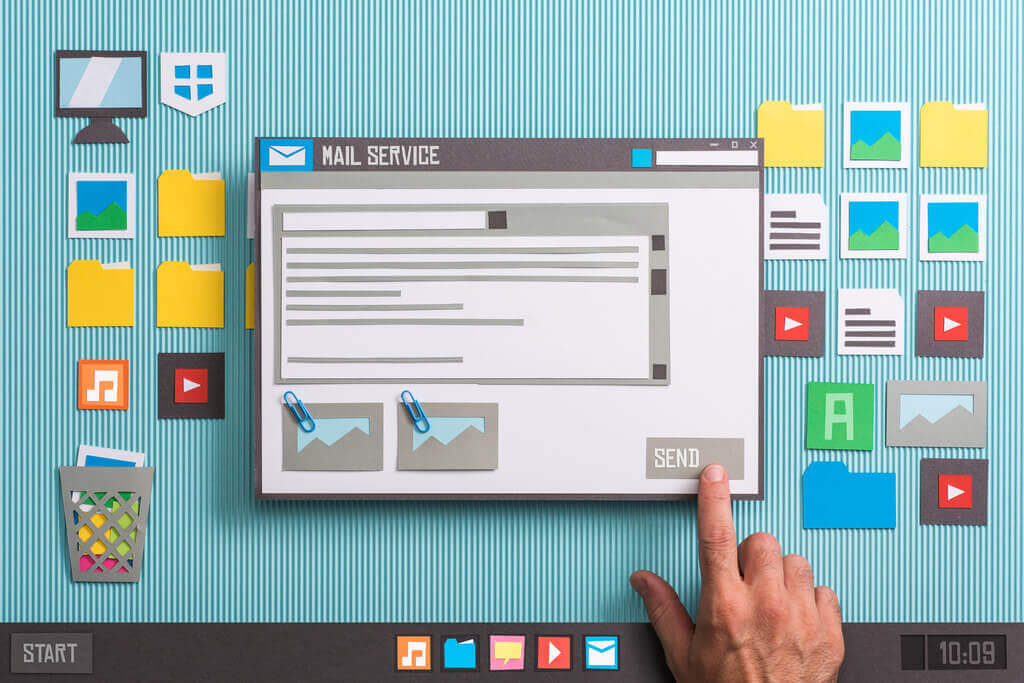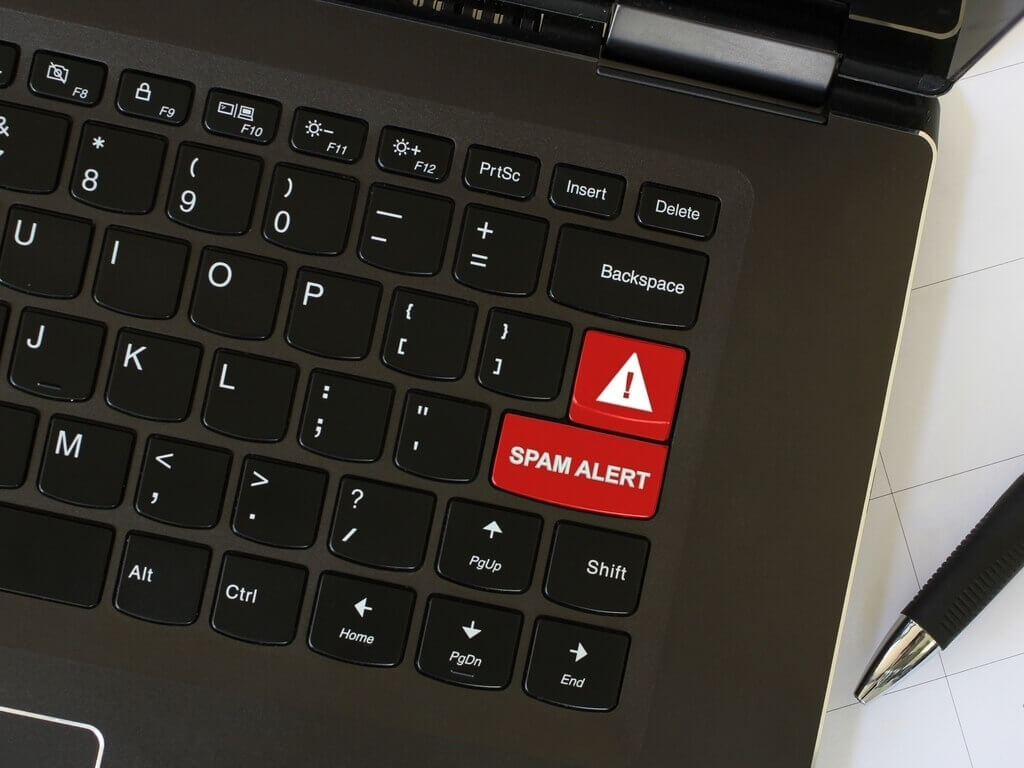How to Avoid Getting Your Cold Emails Marked As Spam (In Depth Guide)
Cold Email 5:29: minOne of the most difficult blockers you’ll find when sending B2B emails are going to be spam filters. Even legitimate emails can oftentimes end up in the junk folder because the senders are bypassing industry practices.
However, this isn’t a guide about how to make sure that your emails are getting in your prospect’s inbox. If you’re looking to start lead generation with email, we’ve already made 2 in-depth tutorials:
- How to Stop Emails From Going to Spam – 15 Tested & Proven Tips
- How to Avoid Spam Filters And Reach Your Leads (29 B2B Tips)
They’re going to be excellent entry points for you in the world of email outreach. If you’re doing email marketing instead, same thing. The exact same principles apply as in cold email in this case.
About Spam Filters
Getting back on track though, this article is all about the technical side of things. How spam filters work, and why they’re “choosing” to trash your email or not.
Of course, there are lots of criteria in play. Emails aren’t assessed from only one viewpoint. Instead, what happens is that they’re steadily getting a “spam score”. If it gets high enough, the email filter decides if it’ll let it reach the inbox.
At the same time, filtering isn’t a universal set of principles. There can be as many parameters for determining what’s spam as there are filters. You could get through to some B2B prospects, while others would be locked behind their email firewall.
All right, so what’s triggering all this flagging? How come even compliant senders can get into trouble and be marked as spam?
Let’s get into the specifics and clear that up.
What’s The Need for Spam Filters?

Back in the old days, it was a whole lot easier to reach your audience. Anti-spam technology wasn’t as developed. Thing is, that wasn’t a positive aspect. At all. Sure, you could reach leads easier, but so could scammers and actual spammers.
People looking to deceive or annoy with fraud and irrelevance. In fact, there’s an extremely high chance that you received spam yourself at some point.
That being said, cybersecurity is one of today’s hottest topics for good reason. So, email service providers (ESPs) also took action against spam; their security measures only got better with time too.
Thing is, this made filters overaggressive in some instances. Because of the excessive spam happening in some industries, a few words associated with them will instantly get you blocked.
For example, if you’re a weight loss service provider, you should never actually say things like “lose weight fast” anywhere in your emails.
That’s one of the classic filter triggers at this point. Think about it: have you, or people that you know, received a considerable amount of spam in the last few years?
The same thing is happening on the B2B spectrum. Algorithms developed around machine learning are steadily teaching themselves what’s a legitimate email and what’s not. Actually, spam filters regularly communicate with each other (yes, really).
They have a base programming which works around worldwide anti-spam acts (like CAN-SPAM, GDPR and CASL), but they also go beyond that. Exactly how they function nowadays is a mystery, but we have a very helpful general rundown.
Essentially, the base principles are the same. They assess subject lines, headers, body content, crosscheck IPs and blacklists, etc. While all this can give you a good run for your money, it’s necessary.
The filters are the only thing keeping the actual spam at bay.
How Do Spam Filters Work?

All marketing and sales emails claim to offer something beneficial. A product, a service, some sort of advice or consulting. However, the links from those emails can contain hidden attacks. This means they pose an immediate danger to an ESPs user base.
These types of malicious emails (or simply clickbait) are removed before they even reach inboxes by spam filters.
Filters and firewalls work based on patterns. By monitoring what types of emails users interact with and reply to, versus which are ignored, they determine which ones are legitimate.
Of course, that’s simply one of the methods.
For example, if you were to suddenly start sending out dozens of emails a day from a newly made email address, you’d be blacklisted quite fast. The filters wouldn’t give your emails a chance, regardless of the quality of the content.
Emails are supposed to be a two-way-street communication channel. If you suddenly burst out emails that get no replies (and in large quantities) nor interactions, that translates to spam for the algorithms.
Because in reality, the way that a lot of sales and marketing is done nowadays is just spam. If you want to stand out from the masses, you must focus on quality, relevance, and messaging. Furthermore, you must have a passing or at least basic knowledge of the technology behind emails.
Your emails aren’t being analyzed by a person, but a machine. Unwillingly matching its junk email parameters means you probably bought a contact list and your email belongs in the spam folder.
Generally speaking, all spam matches a few key characteristics. While not all anti-spam filters work and judge emails the same way, this still means that we can at least nail down what an email shouldn’t be.
Commonly Checked Aspects
The objective of spam countermeasures is always the same: keep junk email out of user’s inboxes. To achieve this, spam filters are going to check and analyze the following:
- Campaign metadata
- Header data
- IP addresses
- Body content
- Blacklists
- Other filters’ databases
- Email language & grammar
- Manual spam reports
- Other rule-based elements
9 Things Checked By Spam Filters

We’ll go over a few pieces of relevant information for both salespeople and marketers. Email marketing and email outreach are different approaches, so some spam-related aspects will be different too.
If you want to learn industry best practices about avoiding spam filters (and more), we recommend our course, Email10K.
With 5+ years of experience in email outreach, we already know all the loopholes around being marked as spam. Even more than that, we’re salespeople and marketers.
Do you want results in 30 – 60 days? Just picture getting $10K, $100K or $1MM deals from email alone. If all of that sounds appealing, we’re looking forward to helping you get qualified leads!
1. Campaign Metadata
The rules of writing an email are similar to those of old school letters. You’re supposed to start with a “Hello X”. If the recipient’s name is missing from the email, that’s a huge red flag for filters.
If you’re doing cold email, you’ll need to invest at least a minimum amount of time in some research. As you’re doing B2B, it’s highly unlikely that the name of the person isn’t already in their address.
For email marketing, it’s even easier; Build your lead magnets and subscription forms so that they contain a “Name” field. Then, customize your “To:” field and introductory greeting with a dynamic field for the recipient’s name.
You should also prioritize asking to contact to add you to their address book. That’s basically an official whitelist for spam filters. The recipient would indicate that they consent to receiving emails from you.
Make sure to set a “Reply-to:” address as well. In some cases, filters will force a Captcha upon your emails to verify that they’re being sent by a human. It’s advised to regularly check that “reply” inbox for these tests.
At the same time, it’s important what email you use to contact them. Free domains for personal addresses (like Gmail, Hotmail, Apple Mail, etc) will be under a filter’s scrutiny.
However, a private business address from Google Workplace (for example) will have a higher sender reputation by default. Of course, a truly significant good reputation is built in time, following a variety of best practices.
2. Header Data

If you check the technical details of an email you received, you’ll notice fields such as:
- from:
- reply-to:
- to:
- date:
- subject:
- mailed-by:
- signed-by:
- security:
That’s the “header data”. The from, mailed-by, and signed-by fields are especially important for anti-spam technologies. Their contents could look like a string of numbers and letters, or they could be straightforward.
Regardless, they contain information such as IP addresses, who’s sending the mail, through which server(s), at what date and time, what security is being used, etc.
In practice, these are almost never checked by a human user. Because they’re usually overlooked, or meaningless if you’re not actively looking for them.
However, scammers and spammers have gotten good at hiding their intent. And those are the fields that will give them away.
For example, see if you can understand what the difference between these 2 domains is:
- google.com
- googIe.com
They look exactly the same, right? But, they aren’t. The first one uses a lowercase “L”. The second one uses an uppercase “i”. And a capitalized “i” is “I” on a keyboard.
You could be tricked by this as a user, but a spam filter won’t be. All domains are cross-checked with existing blacklists and other records of attempted spam (like manual user reports or data from other filters).
In other words, it is unlikely that you’d be affected by how filters decipher header data. Unless you’re trying to do something questionable, or sending from unsecure, unsigned or otherwise strange domains, you’re good to go.
Even if you’re doing email marketing, the concerns should be limited. You don’t have to authorize emails to be sent directly from your domain in your bulk email service dashboard.
They’d still be mailed and signed by your service provider, which are generally well scored.
3. IP Addresses
All emails are routed through one or more servers. These IP addresses are recorded and received by spam filters. If an email is blocked as spam from an IP, then filters become more aggressive towards all emails from that particular IP.
That’s one of the main reasons why you should always get a new domain when you begin cold emailing. It’s likely you’ll end in the spam folder a few times in the beginning.
However, while you’d be learning the ropes, you’d also be affecting the deliverability rates of everyone else with that domain name. Especially if they’d be using the same IP when sending emails.
The concept is the same for email marketing, but works differently. Let’s say you genuinely wanted to send spam mail. You pick your bulk email service provider of choice and get to it.
It might be surprising how little you’re going to be allowed to go at it. The IP rule works the same for these huge senders too. If even one person doesn’t abide by anti-spam rules, they can end up affecting other users too.
This is against Terms of Use of such services, so your account would be (temporarily) suspended.
4. Body Content

Anti-spam algorithms also “read” your email. Not like a human, of course, but they parse everything. The bots analyze the information you are sharing in the email, correlating it with available databases and history logs.
This data is used to determine if they should mark it as spam or not. Usually, their work is pretty straightforward. Spam tends to work around these same themes and topics:
- “Exclusive” offers.
- “Best” deals.
- Discounted prices and limited time products.
- Otherwise hard to believe stories.
- Pretending to be another brand.
- Asking for money with a promise of a 5X, 10X, etc return.
- Announcing a “security threat” and offering a “solution”.
- Playing with various human emotions to gain a click.
Of course, it’s possible to touch on such subjects without spamming. That’s why spam filters don’t blacklist you immediately upon spotting references like that. Well. Not always.
Usually, repeated uses of “problem words” are needed, but there are a few exceptions to the rule.
Some words will actually get your email deleted on the spot. Check out this article to learn more about how spam filters work, as well as getting your email in front of prospects and leads.
Then, there’s also formatting. The more colorful, complicated and “filled” your email marketing layout is, the likelier it is to get filtered out. Aim for a clean & clear design, something that gets your points and CTA across easily.
For cold email, just stick to plain old black-on-white text and space out your paragraphs based on specific ideas. Whenever you want to reference something important, link to it.
Never insert it into the email or attach it to the email, since email filters will only see a potential security threat; an opportunity for malicious software.
Finally, focus on information relevancy.
5. Blacklists
If an email address or domain has been spamming for a while (knowingly or not), it’ll likely be blacklisted. This is a literal list of email addresses from which spam filters should never accept incoming traffic.
They’re made by internet service providers (ISP), ESPs, server admins, etc. There are a few popular ones like SpamCop and Spamhaus, but it’s anyone’s game. It’s just a matter of reputation.
Even if the header info checks out, manual reports can still add email addresses to such lists.
It doesn’t matter what’s in the subject line or the content. They have to treat it as an auto-block. These lists are also regularly updated, as changing inboxes or even domains is pretty easy.
The most effective trick for spammers is, of course, a domain change. Then, their first few emails will most likely get through the filters, but only for a while.
While having no connection to previously blacklisted domains, this type of activity is quickly detected regardless.
At most, it could take a few days. Then, the spammer label is usually placed for good. It’s possible to reach out to get delisted, but the emails must be legitimate first of all, and there’s generally an associated fee.
The best idea is to circumvent having to make those appeals in the first place.
In some cases, companies will maintain their own blacklists to safeguard employees from scammers or spam offers. To better minimize wasted time and irrelevant promotions coming in. Maybe they could even blacklist other companies, for recruitment or corporate values reasons.
Regardless, those types of blacklists are bulletproof, and they’ll quickly put an end to your B2B efforts. That’s because they’re user-generated, and specifically targeted at you.
Your best bet is to learn how to sell through email before reaching out.
6. Other Filters’ Databases

The advancement of cloud computing has really propelled spam filters ahead. The algorithms are now based on “machine learning” and they can literally develop and acquire new knowledge; on their own!
Spam filters “communicate” with each other and share data on illegitimate emails. Furthermore, being cloud based also makes filters more accessible, and likelier for anyone to have. In turn, this directly expands a filter’s database, since it collects more data and emails.
The larger their information pile, and the more it gets shared around, the bigger the overall pool of anti-spam measures. Usually, this means a collection of algorithms all parsing through the same messages that were reported as spam.
The filters look at similarities between all of those emails and determine key characteristics which are likely to be part of all (or most) spam emails, such as:
- Typos.
- Wrong grammar.
- Wrong sentence structure.
- Attachments.
- Images.
- Links to sites with bad reputation.
- Improper character spacing.
- Specific greeting phrases.
7. Email Language & Grammar
As we previously mentioned, grammar and sentence structure is one of the dead giveaways. Thing is, that’s not all that “language” means; it could also literally mean the language that’s being used.
If a user is receiving emails in a foreign language from the one set up for their inbox, that triggers alarms.
Still, there are exceptions here, too. For example, if the user already has other emails in that language in their inbox, or if they manually reported emails from that sender as being not spam.
Another big thing is either sexually explicit language, or content alluding to inappropriate services. One of the most classic scam examples is luring a user towards downloading or clicking on something with promises like that.
8. Manual Spam Reports
Automated email filtering isn’t an exact science. In fact, not even the creators of those programs can be sure of why exactly they’re treating some emails as spam, but not others. Or why some perfectly legitimate emails are getting flagged.
But, that’s part of machine learning. It’s a developing technology, and it still has a long way to go. That being said, there’s one filtering criteria that’ll hit the spot a lot of the times: manual reports!
A user-generated report is a direct “message” towards filters that the sender of that email is a spammer. It can eventually trigger an analysis of their inbox and even their whole domain.
This is great for users, but can also become a huge problem for you as a sender. If leads are simply annoyed by your emails, they can report them as spam to be rid of them.
It doesn’t have to be factual, it doesn’t even have to be reasonable. Filters are bots, programmed to see manual reports as the ultimate form of “this is really bad”. If enough people report a sender, falsely or not, they’ll start being blocked.
This is one of the main reasons why you should really work hard on your emails before sending them. A/B test them on colleagues, be open to feedback and criticism. If your open rates or click rates aren’t good, adjust your subject lines and body content.
Be open to change, because you’re not going to get a lot of second chances. Even users not opening an email is another signal for spam filters that they never requested to receive it, even if maybe they did.
9. Other Rule-Based Elements

Like a lot of software, email firewalls can be configured based on custom rules. These affect all incoming emails. The trick here is that the filtering will happen based only on those rules.
If an email matches what’s defined as spam, it gets filtered. If not, then it won’t. Administrators going this route must make sure that their filter is covered with all potential spam scenarios.
Certain phrases, words, email addresses, subject lines, header content, etc; all of these and more can be configured as spam conditions.
Start Sending Better Emails
Now you know how spam filters work.
Do you think your own cold emails are getting stuck in spam? We’ll help you with that. Cold email is one of our many areas of expertise. As specialists with 5+ years of experience, we can go any route you prefer:
- Outsource your email outreach to us, then sit back and relax. We’ll book your sales calls and prep your prospects. Worry only about the call itself and converting them to leads.
- Get better at cold emailing yourself. We’ll run you through a comprehensive 12-modules course that covers everything you need to know to achieve success.
Or, of course, go both ways. Our experts will give your outreach efforts a great boost and help you get more clients, while you learn how to do everything yourself in the meantime.
The best of both worlds. So, what are you waiting for?






